
Pin-Up Art - II
Pierre-Laurent Brenot
1913 – 1998

Pierre-Laurent Brenot
(8 July 1913 – 8 May 1998), was a French painter who also had a great activity in fashion and advertising. He is also known as the father of the "French pin-up".
Raymond (Pierre-Laurent) Brenot was born on 8 July 1913 at the 44th of rue de Vanves, in the 14th district of Paris.
In 1928, he entered the Ecole Estienne (School of the Book), which he attended for three years.
In 1932, he studied with the French designer Fernand Hertenberger. Brenot's power of observation and accuracy of pen stroke are very soon noticed.
During the "Years of Fashion" (from 1936 to 1950), thanks to his daring and his talent, he was hired by Mr. Chatard, a great dressmaker for men and women, within the store "Fashionable" based at the 16th of the Boulevard Montmartre. Brenot then created a line of men's suits. Moving forward, he made many fashion drawings for other great designers and milliners (Christian Dior, Jacques Fath, Cristóbal Balenciaga, Nina Ricci, Jeanne Lafaurie, Charles Montaigne ...) as well as for Lanvin and Rochas brands.
He soon began to draw portraits, including those of Arletty, Francoise Fabian, Boris Vian and Jean-Claude Brialy.
From 1944 onwards, he started a career as a poster artist and illustrator. However, with the rise of photography in the sixties, this activity shrank badly. Pierre-Laurent Brenot then moved backward to his original painter vocation.
Pierre-Laurent Brenot died on 8 May 1998, in his estate in Loches.

Pierre-Laurent Brenot

Pierre-Laurent Brenot

Pierre-Laurent Brenot

Pierre-Laurent Brenot

Pierre-Laurent Brenot
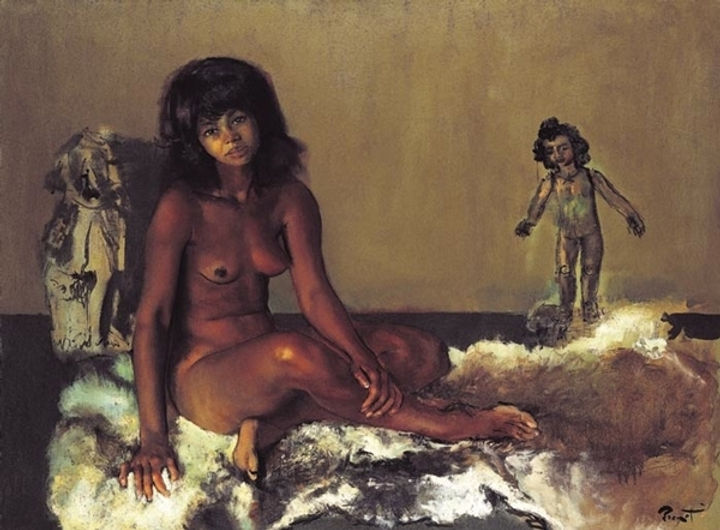
Pierre-Laurent Brenot

Pierre-Laurent Brenot

Pierre-Laurent Brenot

Pierre-Laurent Brenot

Pierre-Laurent Brenot

Pierre-Laurent Brenot
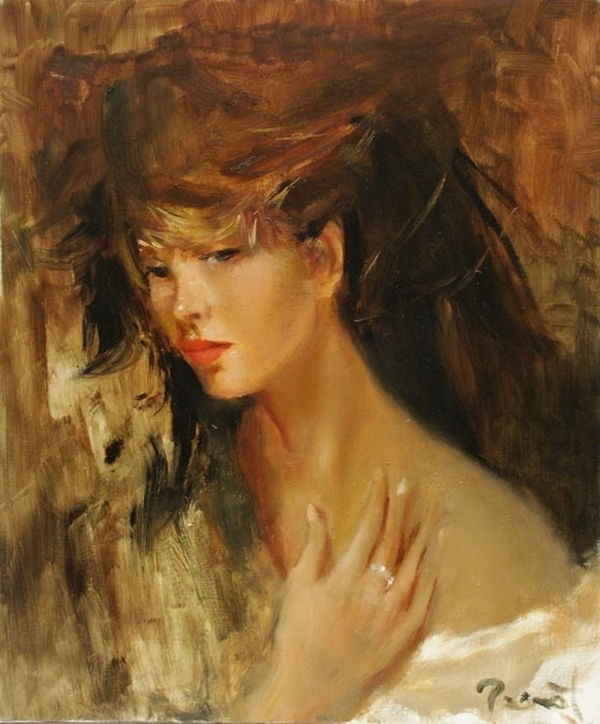
Pierre-Laurent Brenot

Pierre-Laurent Brenot

Pierre-Laurent Brenot

Pierre-Laurent Brenot

Pierre-Laurent Brenot

Pierre-Laurent Brenot

Pierre-Laurent Brenot

Pierre-Laurent Brenot

Pierre-Laurent Brenot

Pierre-Laurent Brenot

Pierre-Laurent Brenot

Pierre-Laurent Brenot

Pierre-Laurent Brenot

Pierre-Laurent Brenot
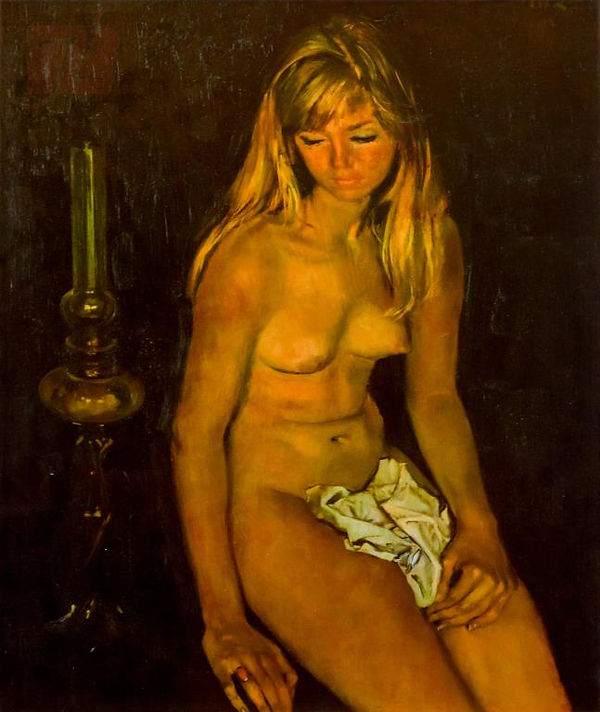
Pierre-Laurent Brenot

Pierre-Laurent Brenot

Pierre-Laurent Brenot

Pierre-Laurent Brenot

Pierre-Laurent Brenot

Pierre-Laurent Brenot
Gillette Elvgren
1914 – 1980
Gillette A. Elvgren
(March 15, 1914 – February 29, 1980) was an American painter of pin-up models, advertising and illustration. Best known for his pin-up paintings for Brown & Bigelow, Elvgren studied at the American Academy of Art. He was strongly influenced by the early "pretty girl" illustrators, such as Charles Dana Gibson, Andrew Loomis, and Howard Chandler Christy. Other influences included the Brandywine School founded by Howard Pyle.
Gillette A. Elvgren was born in St. Paul, Minnesota, and attended University High School. After graduation, he began studying art at the Minneapolis Institute of Arts. He subsequently moved to Chicago to study at the American Academy of Art. He graduated from the Academy during the depression at the age of 22. Elvgren joined the stable of artists at Stevens and Gross, Chicago's most prestigious advertising agency. He became a protégé of the artist Haddon Sundblom.
In 1937, Gil began painting calendar pin-ups for Louis F. Dow, one of America's leading publishing companies, during which time he created about 60 works on 28 × 22 in canvas and distinguished them with a printed signature. Many of his pin-ups were reproduced as nose art on military aircraft during World War II. Circa 1944, Elvgren was approached by Brown and Bigelow, a firm that still dominates the field in producing calendars and advertising specialties. He was associated with Brown & Bigelow from 1945 to 1972. At Brown & Bigelow Elvgren began working with 30 inch x 24 inch canvases, a format that he would use for the next 30 years, and signed his work in cursive.
Elvgren was a commercial success. He lived in various locations, and was active from the 1930s to 1970s. In 1951 he began painting in a studio in his home, then in Winnetka, Illinois, using an assistant to set up lighting, build props and scenes, photograph sets, and prepare his paints. His clients ranged from Brown and Bigelow and Coca-Cola to General Electric and Sealy Mattress Company. During the 1940s and 1950s he illustrated stories for many magazines, such as The Saturday Evening Post and Good Housekeeping. Among the models Elvgren painted were Myrna Hansen, Donna Reed, Barbara Hale, Arlene Dahl, Lola Albright and Kim Novak.

Gillette Elvgren

Gillette Elvgren

Gillette Elvgren

Gillette Elvgren

Gillette Elvgren

Gillette Elvgren

Gillette Elvgren

Gillette Elvgren

Gillette Elvgren

Gillette Elvgren

Gillette Elvgren

Gillette Elvgren

Gillette Elvgren

Gillette Elvgren

Gillette Elvgren

Gillette Elvgren

Gillette Elvgren

Gillette Elvgren

Gillette Elvgren

Gillette Elvgren

Gillette Elvgren
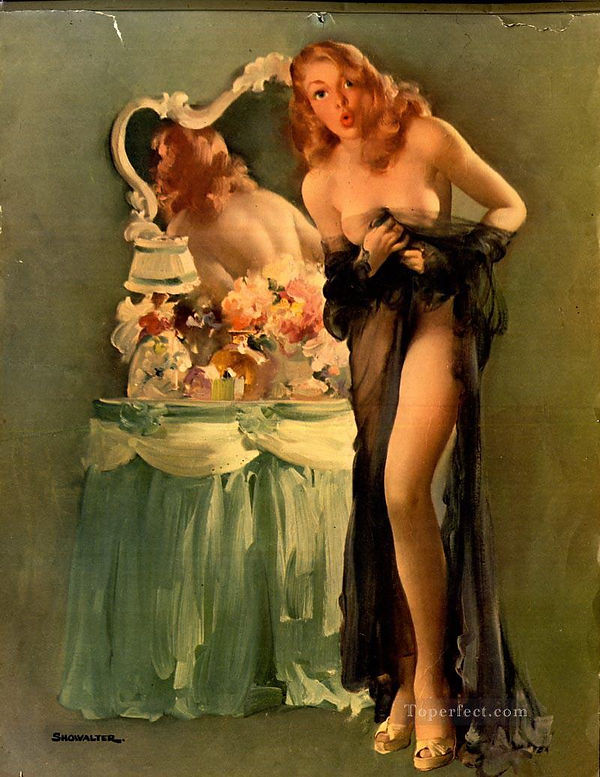
Gillette Elvgren

Gillette Elvgren

Gillette Elvgren

Gillette Elvgren
Joyce Ballantyne
1918 – 2006
Joyce Ballantyne
(April 4, 1918 – May 15, 2006) was a painter of pin-up art. She is best known as the designer of the Coppertone girl, whose swimming costume is being pulled down by a dog.
Early life and career
She was born in Norfolk, Nebraska during World War I, and grew up in Omaha. She attended the University of Nebraska for two years and then transferred to the Art Institute of Chicago to study commercial art and the American Academy of Art.
After two years at the Art Institute, Ballantyne joined Kling Studios, where she painted Rand McNally maps and illustrated books for Cameo Press. She then moved to the Stevens-Gross Studio, where she remained for more than a decade. While at the studio, she became part of a group of artists that included Gil Elvgren, Al Moore, and Al Buell.
Pinup girls
In 1945 Ballantyne began painting pin-ups for Brown & Bigelow, having been recommended by Gil Elvgren. While there, she designed direct mail pin-up brochures for the company, and was eventually given the honor of creating an Artist's Sketch Pad twelve page calendar. She often used herself as a model. In 1954, Ballantyne painted twelve pin-ups for a calendar published by Shaw-Barton. Upon the calendar's release in 1955, demand was so great that the company reprinted it many times.
Ballantyne then went on to paint one of the most famous advertising images ever, when Coppertone suntan lotion asked her to create a billboard image in 1959. That image, of a pigtailed girl with her bathing suit being tugged down by a small dog, has become an American icon. Her 3-year-old daughter Cheri Brand was used as the model for the girl.

Joyce Ballantyne

Joyce Ballantyne

Joyce Ballantyne

Joyce Ballantyne

Joyce Ballantyne

Joyce Ballantyne
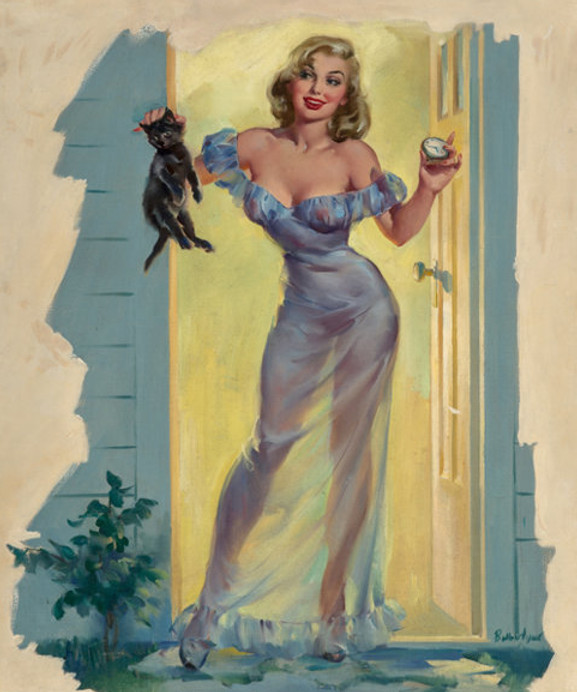
Joyce Ballantyne

Joyce Ballantyne
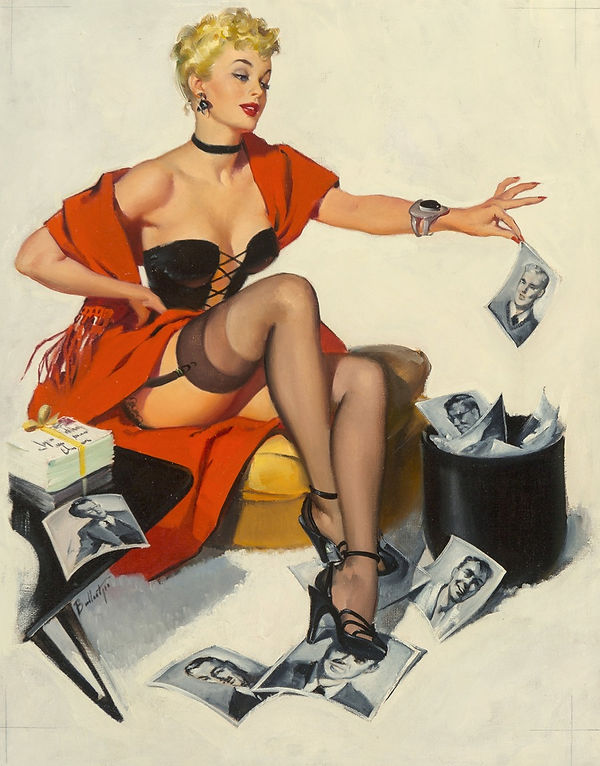
Joyce Ballantyne

Joyce Ballantyne

Joyce Ballantyne

Joyce Ballantyne

Joyce Ballantyne

Joyce Ballantyne

Joyce Ballantyne

Joyce Ballantyne

Joyce Ballantyne

Joyce Ballantyne

Joyce Ballantyne

Joyce Ballantyne

Joyce Ballantyne

Joyce Ballantyne

Joyce Ballantyne

Joyce Ballantyne

Joyce Ballantyne

Joyce Ballantyne

Joyce Ballantyne
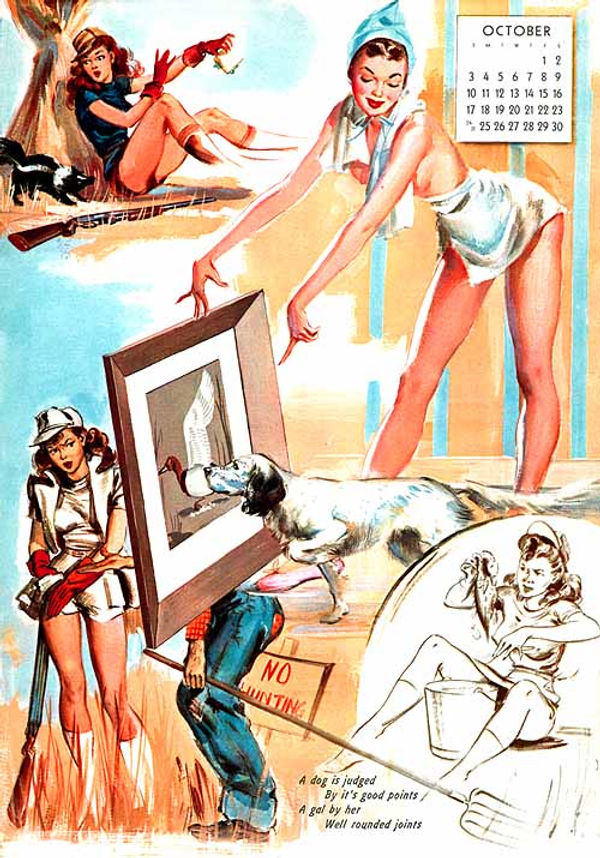
Joyce Ballantyne

Joyce Ballantyne

Joyce Ballantyne
Edward Runci
1921 - 1986

Edward Runci
American, 1921 - 1986
Edward Runci was an Italian-born American painter best known for his work as a pin-up artist. Born on July 4, 1921 in Genoa, Italy, he moved with his family to the United States in 1930. Spending much of his adulthood in Los Angeles, he created depictions of voluptuous women for calendars and advertisements for companies such as Coca-Cola. Along with his pin-ups of the late 1940s, the artist painted landscapes and portraits of celebrities. Notably, his portrait of Gerald L.K. Smith, a one-time presidential candidate, was included at a show held a the Smithsonian Institute in Washington, D.C.

Edward Runci

Edward Runci
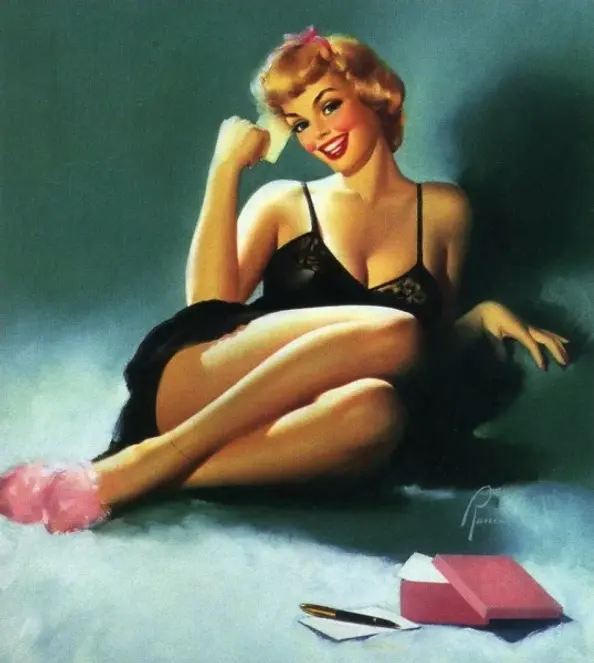
Edward Runci

Edward Runci

Edward Runci

Edward Runci

Edward Runci

Edward Runci

Edward Runci

Edward Runci

Edward Runci

Edward Runci

Edward Runci
.webp)
Edward Runci

Edward Runci

Edward Runci

Edward Runci

Edward Runci

Edward Runci

Edward Runci

Edward Runci

Edward Runci

Edward Runci
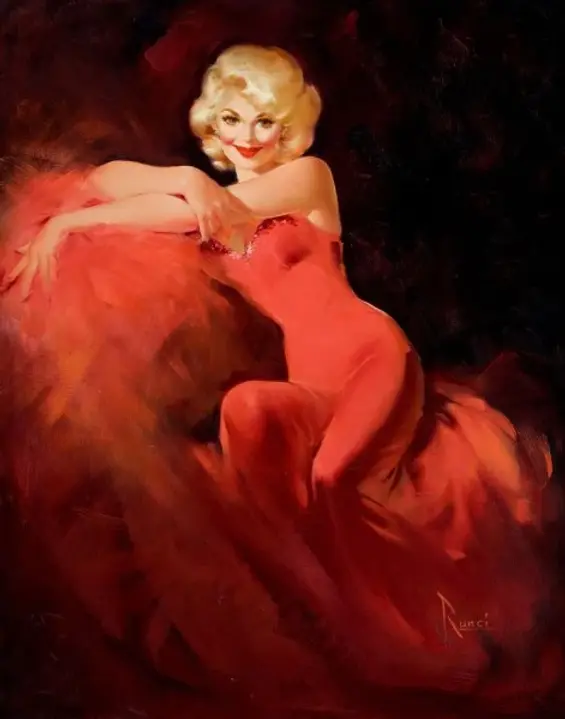
Edward Runci
Robert Maguire
1921 – 2005

Robert Maguire
Robert Maguire is an easy addition to noirwhale.com’s noir artist gallery— the guy created over 600 amazing covers for pulps since 1950.
(August 3, 1921 – February 26, 2005), or R. A. Maguire, was a twentieth-century American illustrator and fine artist. Known primarily for his crime noir paperback cover art, he produced artwork for over 1,200 covers from 1950 until his death. Maguire is a Member Emeritus of The Society of Illustrators.
Son of a draftsman architect, Robert Maguire began his education at Duke University, but like so many others of his generation, left for service in World War II, fighting with the 88th infantry in Italy.[2] Upon his return, his interest in art led him to the Art Students League in New York, where his instructor was the famed Frank Reilly. Two of Maguire's more noteworthy fellows were Clark Hulings and James Bama,[2] graduates all of the class of '49.
Maguire's career took off immediately with his first work for Trojan Publications: cover art for their line of small pocket pulps, with titles like Hollywood Detective Magazine (Oct. 1950). Maguire did three of the eight covers for this pocket pulp series. From then on, his career blossomed.
His classic period of the 50s and 60s grew out of his skilled female images, some of the best and most memorable of the period. Maguire's mastery of the "femme fatale" created a vintage paperback icon: his women are passionate yet somehow down to earth, approachable, though sometimes at your own risk.
Robert Maguire continued evolving and producing fine art as well as many memorable illustrations.
Artwork
Maguire's over 1,200 covers for such publishers as Pocket, Dell, Ace, Harper, Avon, Silhouette, Ballantine, Pyramid, Bantam, Lion, Berkley, Beacon, Monarch and Signet - virtually every mainstream publishing house in New York - makes his original cover art a tour de force in the last half of the twentieth century.
One of his most famous book covers is Black Opium, which is considered by many crime noir paperback collectors to be the definitive crime noir paperback cover of the genre. He also designed art covers for video games and for music CDs.

Robert A. Maguire

Robert A. Maguire

Robert A. Maguire

Robert A. Maguire

Robert A. Maguire

Robert A. Maguire

Robert A. Maguire

Robert A. Maguire

Robert A. Maguire

Robert A. Maguire

Robert A. Maguire

Robert A. Maguire

Robert A. Maguire

Robert A. Maguire

Robert A. Maguire
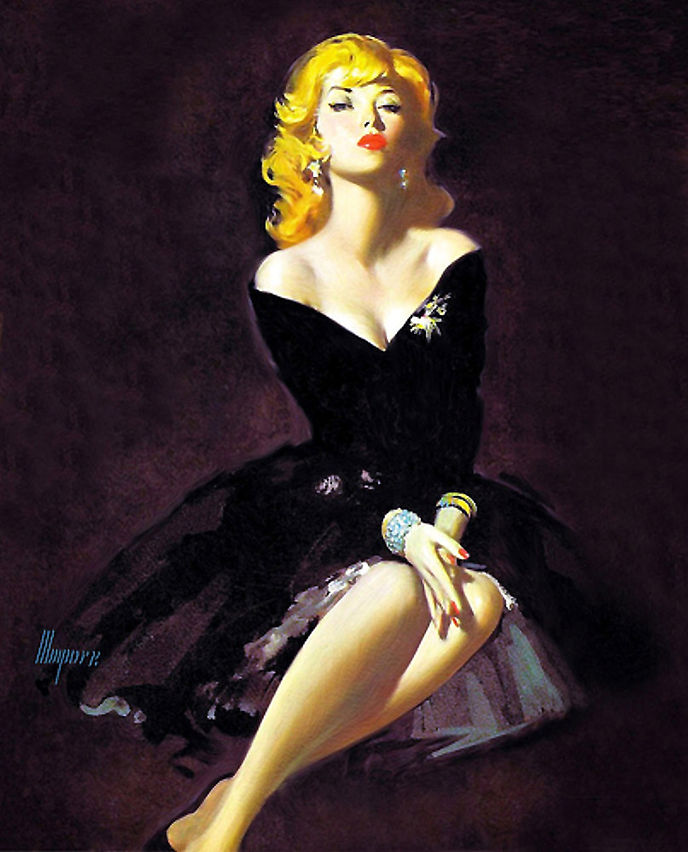
Robert A. Maguire

Robert A. Maguire

Robert A. Maguire
Harry Ekman
1923 – 1999

Harry Ekman
(Chicago, 1923 – Medford, New Jersey, 1999) was an American graphic artist. His early influences were Gil Elvgren, Haddon Sundblom, Joyce Ballantyne. Ekman initially apprenticed with Sundblom who was a close family friend and by 1951 for Elvgren.
Ekman studied at the American Academy of Art and the Art Institute of Chicago. He is best remembered for his pin-up and advertising work. Working with Gil Elvgren, he is thought to have penned several of the iconic images attributed to Elvgren. By 1960, Ekman was making a transition from commercial illustration and pin-up art to portraiture. The rest of his career was devoted to gallery works and portraits.
Harry Ekman

Harry Ekman

Harry Ekman

Harry Ekman

Harry Ekman

Harry Ekman

Harry Ekman

Harry Ekman

Harry Ekman

Harry Ekman

Harry Ekman

Harry Ekman

Harry Ekman

Harry Ekman

Harry Ekman

Harry Ekman

Harry Ekman
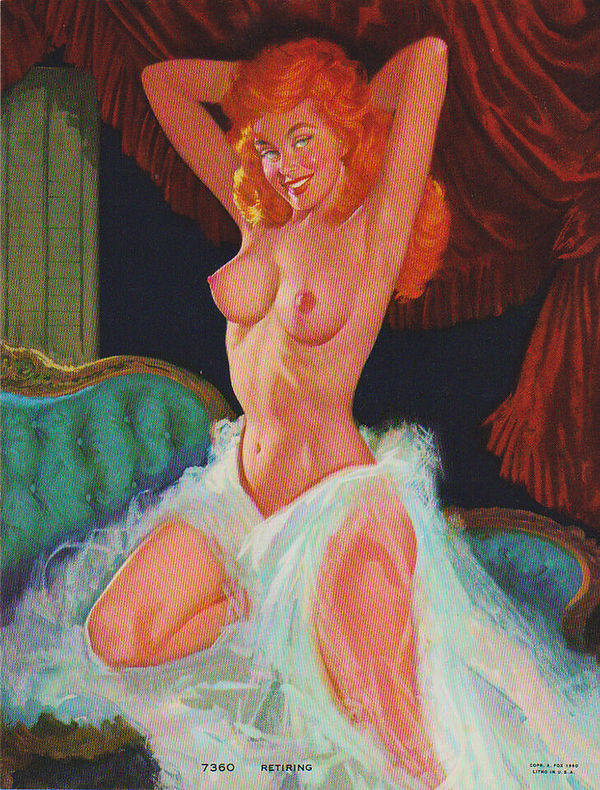
Harry Ekman
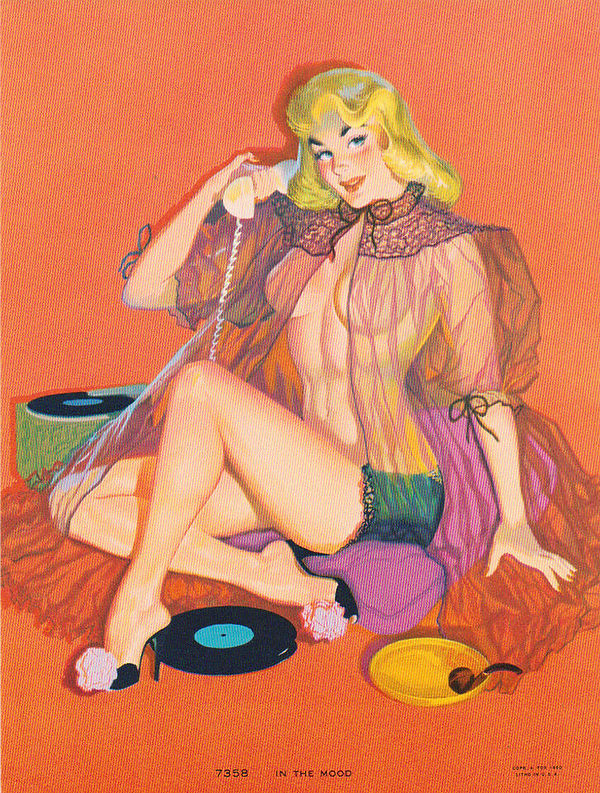
Harry Ekman

Harry Ekman

Harry Ekman
Robert McGinnis
b.1926
Robert McGinnis
Robert Edward McGinnis (born February 3, 1926) is an American artist and illustrator. McGinnis is known for his illustrations of more than 1,200 paperback book covers, and over 40 movie posters, including Breakfast at Tiffany's (his first film poster assignment), Barbarella, and several James Bond and Matt Helm films.
Born Robert Edward McGinnis in Cincinnati, Ohio, he was raised in Wyoming, Ohio.
McGinnis became an apprentice at Walt Disney Studios, then studied fine art at Ohio State University. After wartime service in the Merchant Marine he entered advertising and a chance meeting with Mitchell Hooks in 1958 led him to be introduced to Dell Publishing began a career drawing a variety of paperback covers for books written by such authors as Donald Westlake (writing as Richard Stark), Edward S. Aarons, Erle Stanley Gardner, Richard S. Prather, and the Michael Shayne and Carter Brown series.
McGinnis later did artwork for Ladies' Home Journal, Woman's Home Companion, Good Housekeeping, TIME, Argosy, Guideposts, and The Saturday Evening Post.
He was main title designer for The Hallelujah Trail (1965).
McGinnis's attention to detail was such that when he was assigned to do the artwork for Arabesque he requested Sophia Loren's tiger stripe dress be sent for him for a model to wear so he could get the right appearance.
In 1985, McGinnis was awarded the title of "Romantic Artist of the Year" by Romantic Times magazine for his many romance novel paperback covers.
Since 2004, McGinnis has created cover illustrations for the Hard Case Crime paperback series.
Starting in 2016, McGinnis has painted a number of retro-style covers for reissues of books by Neil Gaiman.
He is a member of the Society of Illustrators Hall of Fame. McGinnis is the subject of a documentary film, Robert McGinnis: Painting the Last Rose of Summer, by Paul Jilbert.

Rubert McGinnis

Rubert McGinnis

Rubert McGinnis

Rubert McGinnis

Rubert McGinnis

Rubert McGinnis

Rubert McGinnis

Rubert McGinnis

Rubert McGinnis

Rubert McGinnis

Rubert McGinnis

Rubert McGinnis

Rubert McGinnis

Rubert McGinnis

Rubert McGinnis

Rubert McGinnis

Rubert McGinnis

Rubert McGinnis

Rubert McGinnis

Rubert McGinnis

Rubert McGinnis

Rubert McGinnis
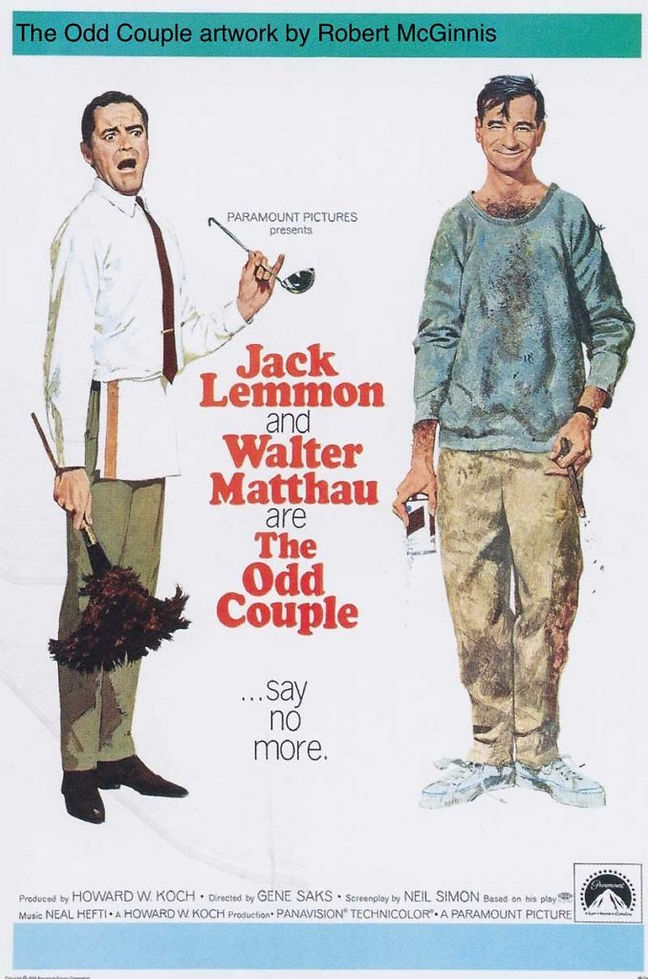
Rubert McGinnis
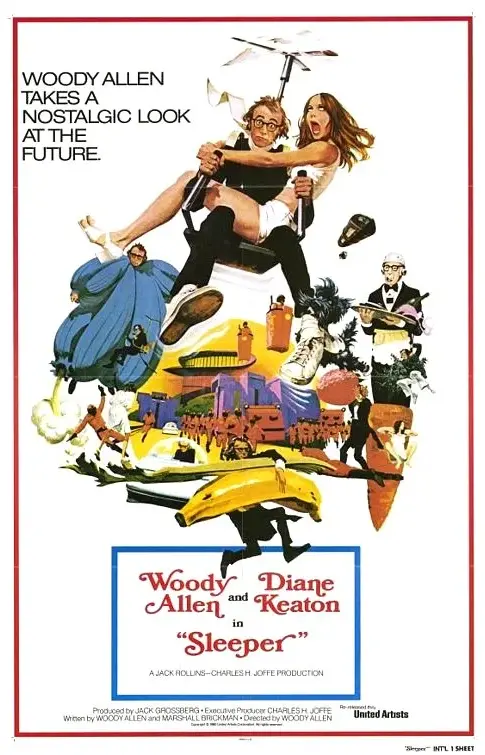
Rubert McGinnis

Rubert McGinnis

Rubert McGinnis

Rubert McGinnis

Rubert McGinnis

Rubert McGinnis
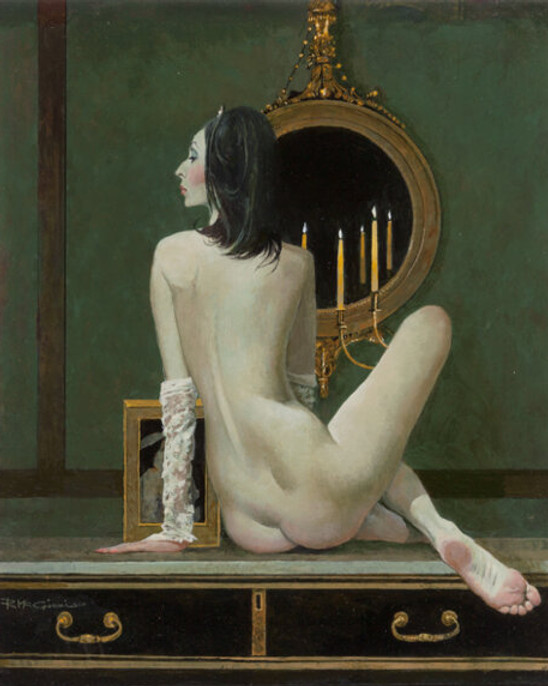
Rubert McGinnis

Rubert McGinnis

Rubert McGinnis

Rubert McGinnis

Rubert McGinnis

Rubert McGinnis

Rubert McGinnis

Rubert McGinnis

Rubert McGinnis

Rubert McGinnis

Rubert McGinnis

Rubert McGinnis

Rubert McGinnis

Rubert McGinnis

Rubert McGinnis
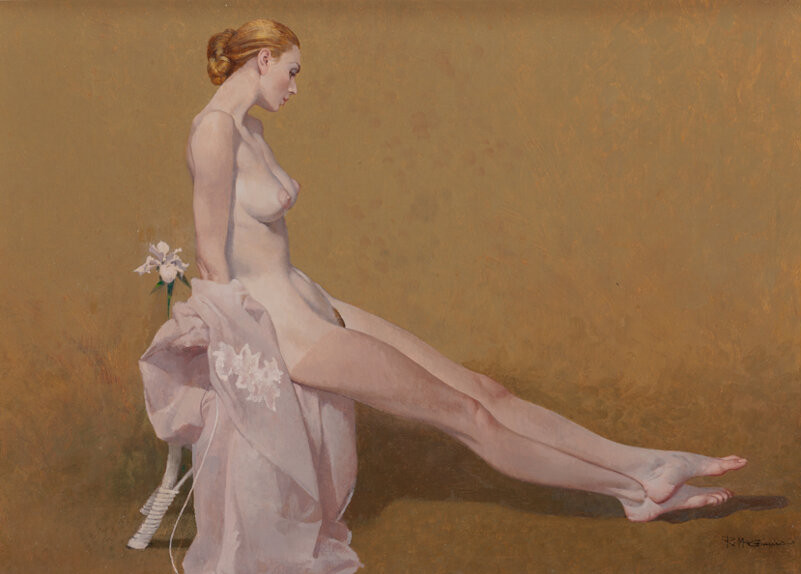
Rubert McGinnis
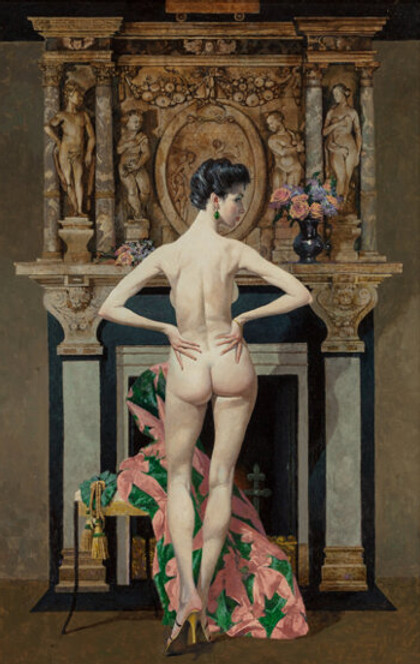
Rubert McGinnis
Aslan
1930 – 2014

Aslan (born Alain Gourdon; 23 May 1930 in Bordeaux, France – 11 February 2014 in Sainte-Adèle, Quebec, Canada) was a French painter, sculptor and pin-up artist. He is mostly known in France for his pin ups. He contributed to Lui from the creation of the magazine in 1964 to the early eighties, providing a monthly pin up.
He is the sculptor of Dalida's funerary statue on her tomb from 1987, and her bronze bust that was erected on Place Dalida in 1997. He also sculpted the Fifth Republic Marianne as Brigitte Bardot in 1970, followed by the Mireille Mathieu Marianne.

Aslan

Aslan

Aslan
Aslan

Aslan

Aslan
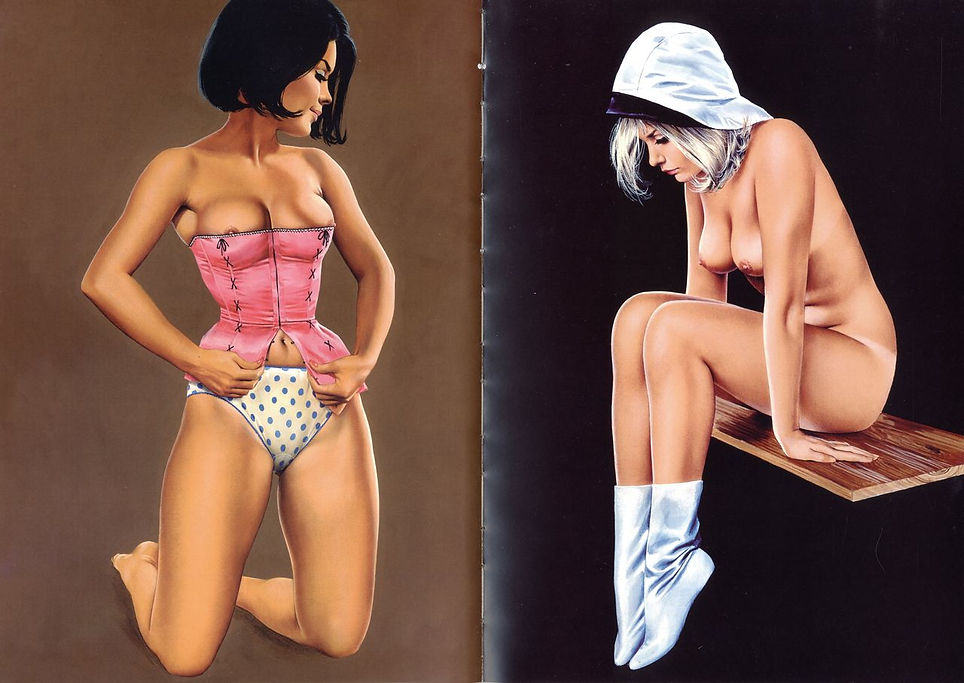
Aslan

Aslan

Aslan

Aslan

Aslan

Aslan

Aslan

Aslan
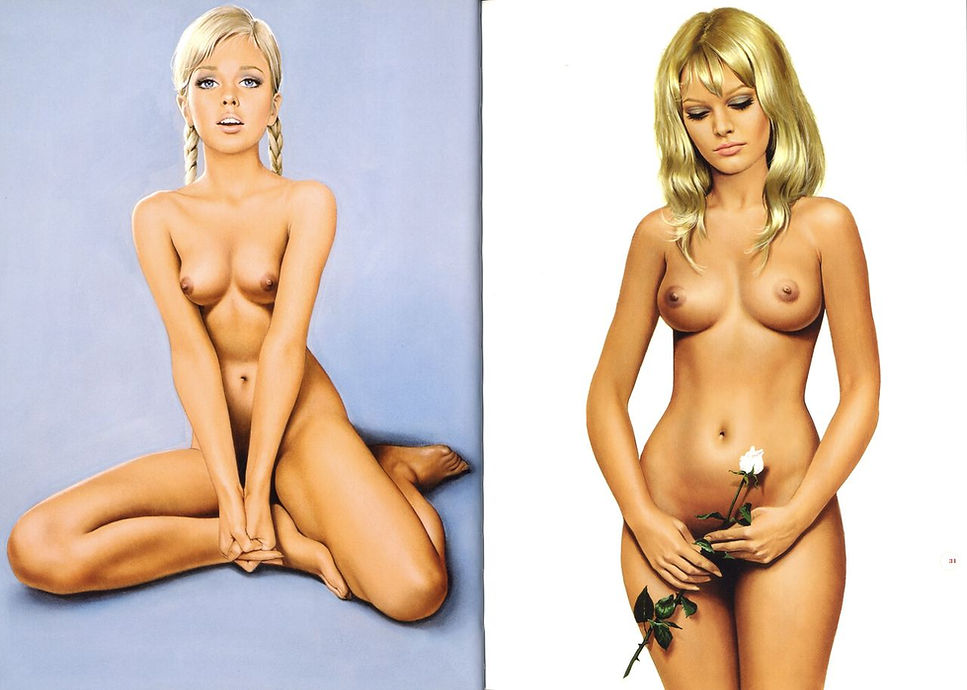
Aslan

Aslan
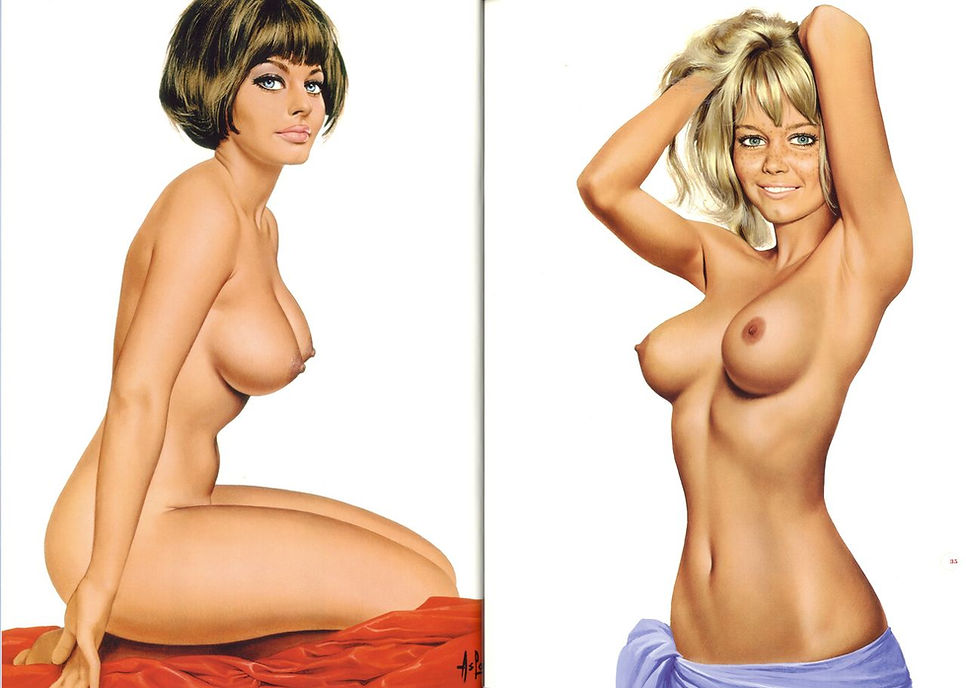
Aslan

Aslan

Aslan

Aslan



Aslan

Aslan

Aslan

Aslan
Mel Ramos
1935 – 2018
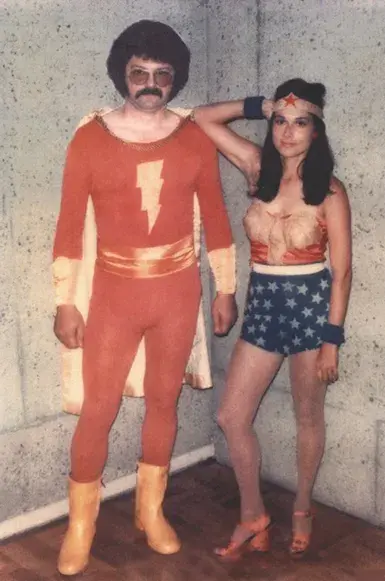
Mel Ramos
(July 24, 1935 – October 14, 2018) was an American figurative painter, specializing most often in paintings of female nudes, whose work incorporates elements of realist and abstract art.
Born in Sacramento, California, to a first generation Portuguese-Azorean immigrant family, he gained his popularity as part of the pop art movement of the 1960s. Ramos is "best known for his paintings of superheroes and voluptuous female nudes emerging from cornstalks or Chiquita bananas, popping up from candy wrappers or lounging in martini glasses". He was also a university art professor.
Ramos attended Sacramento Junior College and San Jose State College. One of his earliest art teachers was Wayne Thiebaud, who is considered his mentor, and who remained his friend. Ramos received his B.A. and his M.A. from Sacramento State College, finishing his education in 1958. From 1958–1966, Ramos taught art at Elk Grove High School and Mira Loma High School in Sacramento. After two brief college teaching assignments, he began a long career (1966–1997) at California State University, East Bay, in Hayward, California, and then served as professor emeritus. He was Artist in Residence at Syracuse University and the University of Wisconsin.
Ramos married Leta (Helmers) Ramos in 1955, who was the model for many of his early nude paintings.
Mel Ramos with Leta, a frequent model for the artist’s work.

Mel Ramos

Mel Ramos

Mel Ramos

Mel Ramos

Mel Ramos

Mel Ramos

Mel Ramos

Mel Ramos

Mel Ramos

Mel Ramos

Mel Ramos

Mel Ramos

Mel Ramos

Mel Ramos

Mel Ramos

Mel Ramos

Mel Ramos

Mel Ramos

Mel Ramos

Mel Ramos

Mel Ramos Marilyn #1

Mel Ramos Marilyn #2

Mel Ramos Marilyn #3

Mel Ramos

Mel Ramos

Mel Ramos
Olivia De Berardinis
b.1948
Olivia De Berardinis
Olivia De Berardinis, born 1948, known professionally as Olivia, is an American artist who is famous for her paintings of women, often referred to as pinup or cheesecake art. She has been working in this genre since the mid-1970s, and became a contributor to Playboy in 1985 which ultimately led to her own monthly pinup page in the magazine.
De Barardinis was an only child who was schooled in Elizabeth, NJ. Some of her earliest paintings were of her mother. De Berardinis arrived in Manhattan in 1967 where she enrolled in the School of Visual Arts. She resided in New York City's Soho neighborhood from 1970 to 1974, creating Minimalist paintings. De Berardinis was one of the new artists introduced in the Second Annual Contemporary Reflections 1972–73, of the Aldrich Museum of Contemporary Art in Ridgefield, Connecticut. She was also presented as one of 18 new artists in the "Tenth Anniversary, the Larry Aldrich Museum of Contemporary Art 1964-74".
By 1975, financial pressures forced De Berardinis to seek out commercial art work and she started painting women in explicit drawings for men's magazines. In 1985 she started to contribute to Playboy magazine. By June 2004, she was given her own monthly pinup page for the magazine that continued for many years, often appearing with captions written by Hugh Hefner.
De Berardinis' uses an airbrush to generate her figures. Her female pin-ups were released in a digital collection on CD-ROM in 1990, and early copies of the program MacPaint had an Easter egg that led to the presentation of her Zebra lady.
She was called the "leading female pinup artist" in a 2001 guide on pornography. In 2004, news articles noted De Barardinis was "one of the few female artists to achieve fame" in the genre of pinup art, and her art can sell for up to $75,000. She started creating paintings of 1950s pinup model Bettie Page in 1978, and would continue to do so for twenty years. De Barardinis' called Page her favorite model, and presented her in a variety of poses. Other people she used as models included Anna Nicole Smith, Holly Madison, Mamie Van Doren, Margaret Cho, and Courtney Love.
De Berardinis' artwork has been shown in art galleries throughout the United States, including a boutique focused on Bettie Page.

Olivia De Berardinis

Olivia De Berardinis

Olivia De Berardinis

Olivia De Berardinis

Olivia De Berardinis

Olivia De Berardinis

Olivia De Berardinis

Olivia De Berardinis

Olivia De Berardinis

Olivia De Berardinis

Olivia De Berardinis

Olivia De Berardinis

Olivia De Berardinis

Olivia De Berardinis

Olivia De Berardinis

Olivia De Berardinis

Olivia De Berardinis

Olivia De Berardinis

Olivia De Berardinis

Olivia De Berardinis

Olivia De Berardinis

Olivia De Berardinis

Olivia De Berardinis
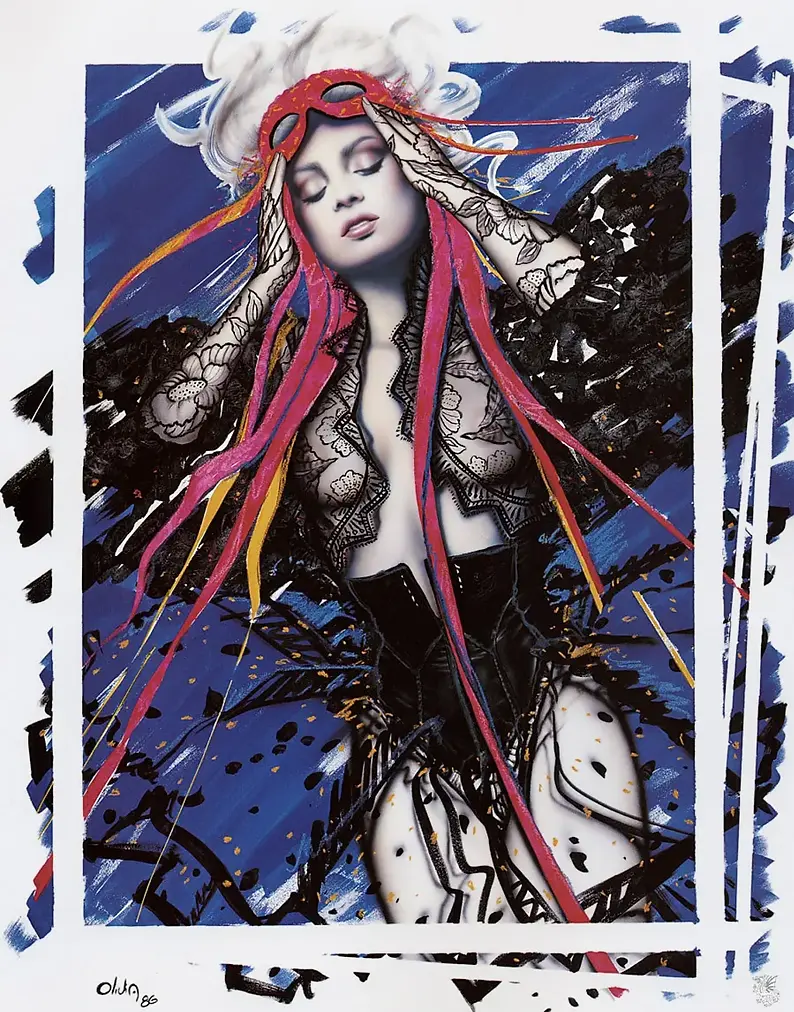
Olivia De Berardinis

Olivia De Berardinis

Olivia De Berardinis

Olivia De Berardinis

Olivia De Berardinis

Olivia De Berardinis

Olivia De Berardinis

Olivia De Berardinis

Olivia De Berardinis

Olivia De Berardinis

Olivia De Berardinis

Olivia De Berardinis
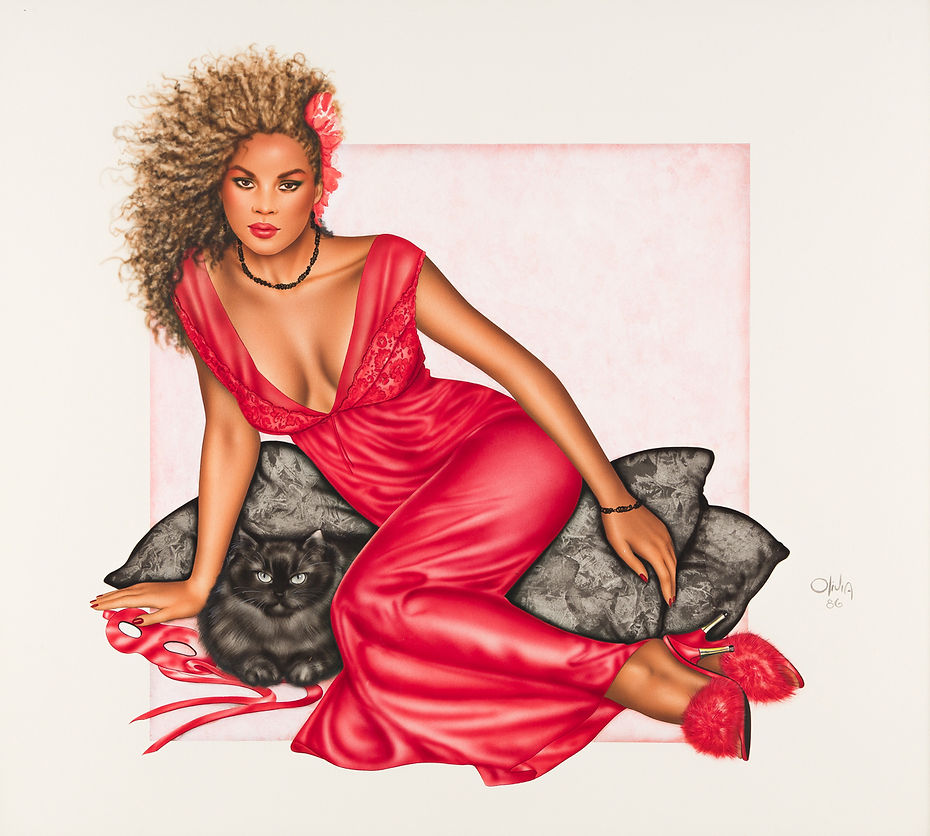
Olivia De Berardinis

Olivia De Berardinis

Olivia De Berardinis

Olivia De Berardinis

Olivia De Berardinis
Erik Drudwyn
b.1968
Erik Drudwyn was born in 1968 in Fort Collins, Colorado and raised in Wyoming where he recalls first drawing seriously at the age of thirteen. “My mother is an artist so I was exposed to art at an early age. I did quite a lot of drawing before thirteen but it never really meant anything to me. It was just something to do when there wasn't anything else to do. Then one day it went from 'something to do' to 'something I had to do.' I wanted to draw people, especially girls. I wanted to be able to make the beauty that I was beginning to see. The thought of being able to 'make beauty' was very exciting. It's still what drives me to do artwork today and oddly enough, with every work I've ever done, I feel like I haven't achieved this goal. I spent a great deal of time at the library reading books about the masters and becoming further inspired by their work. Growing up in Wyoming had its drawbacks for a young artist with such inspirations; it seemed somewhat taboo to draw nudes. For this reason, I spent much of my early years limited to drawing from whatever popular adult publications I could find and from my sister's fashion magazines left about. It also meant that I spent a lot of time, in classes and for family, drawing things that I didn't wish to be drawing.”

Erik Drudwyn

Erik Drudwyn

Erik Drudwyn

Erik Drudwyn

Erik Drudwyn

Erik Drudwyn

Erik Drudwyn

Erik Drudwyn

Erik Drudwyn

Erik Drudwyn

Erik Drudwyn

Erik Drudwyn

Erik Drudwyn

Erik Drudwyn

Erik Drudwyn

Erik Drudwyn

Erik Drudwyn

Erik Drudwyn

Erik Drudwyn

Erik Drudwyn

Erik Drudwyn

Erik Drudwyn

Erik Drudwyn
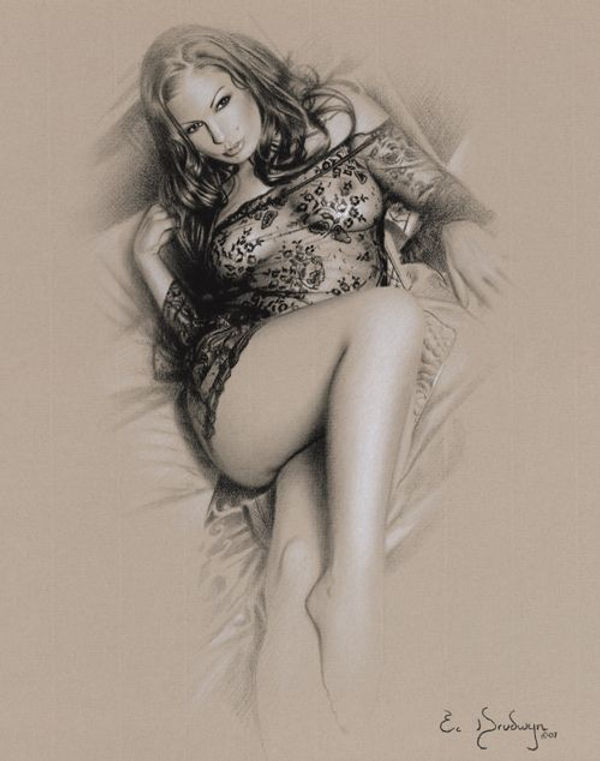
Erik Drudwyn

Erik Drudwyn

Erik Drudwyn

Erik Drudwyn

Erik Drudwyn

Erik Drudwyn

Erik Drudwyn

Erik Drudwyn

Erik Drudwyn

Erik Drudwyn

Erik Drudwyn